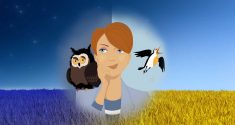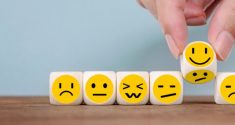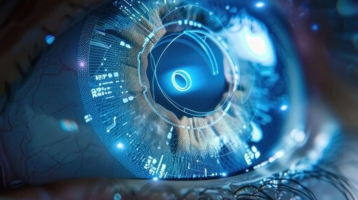As chronobiology has increased understanding of the role of timing and biological rhythms in physical and mental health, chronotypes have garnered a great deal of research interest during recent years. A number of studies have looked at the potential connections between chronotype and mental health, revealing a wealth of interesting results. Among those results is a link between night owls and anxiety, with those people who fall into the eveningness category of chronotypes having a higher risk of anxiety related disorders, as well as an increased risk of other mental health issues.
Chronotype: The Basics
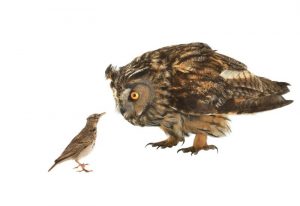 The term chronotype is used to describe a person’s preferred sleep, wake and active-period timing over the approximately 24-hour period of our overall circadian rhythm. Studies show that there is genetic influence on chronotype and it is a heritable trait.
The term chronotype is used to describe a person’s preferred sleep, wake and active-period timing over the approximately 24-hour period of our overall circadian rhythm. Studies show that there is genetic influence on chronotype and it is a heritable trait.
Most people are familiar with the phrases “early bird” or “morning lark,” used to describe those who are morning people who rise and shine naturally, and “night owl,” used to describe those who tend to be evening or night people. The people who fall in between, intermediates, didn’t get a snappy descriptive phrase it seems. A more modern chronotype division, still built on that basic concept of morningness, eveningness and intermediates, uses four groups.
In this grouping, everybody gets a name or, more accurately, an animal. Bears, the group most people fall into, tend to wake and sleep with the sun, are usually most productive before noon and typically experience an energy slump between 2:00 p.m. and 4:00 p.m. The wolf is not a morning person, preferring to get up later. Wolves are most productive between noon and 4:00 p.m. with another productivity burst around 6:00 p.m. Lions rise in the early morning, are at their peak productivity until noon and are in bed by 9:00 p.m. or 10:00 p.m. Dolphins are at peak productivity between 10:00 a.m. and 2:00 p.m., but often are poor sleepers, with a heightened sensitivity to noise and light.
The Link Between Night Owls and Anxiety
The connections between chronotype and mental health have been established through some pretty large studies. Among these are a study that used data from 697,828 people, confirming the links found by numerous other smaller studies through the years.
Regarding anxiety and related disorders, researchers across a variety of studies have found that people falling into the eveningness category, or night owls, have a significantly higher risk of this type of mental health issue than do those with chronotypes more associated with morningness, such as morning larks, lions and bears. Other mental health issues associated with eveningness include reduced or poor impulse control, depression and a higher risk of substance misuse and abuse.
In one recent study seeking to gain a deeper insight into the link between night owls and increased anxiety risk and the possible mechanisms involved, researchers found what they described as an “enhanced fear acquisition” in night owls. It was a small study, involving 40 participants total, with 20 being those in the eveningness category and the other 20 in the intermediate category. The researchers used, according to their description, a “two-day Pavlovian fear learning and extinction virtual reality task” to obtain the study results. As explained by the researchers, this “enhanced fear acquisition” found in the eveningness group may be a significant factor in the higher anxiety risk of this chronotype.
Of course, there are numerous factors at play, such as the sleep deficits common to night owls forced to live on a morning lark or bear sort of schedule due to career and family demands, the impact of those deficits on the circadian rhythm and the negative impact of poor sleep and circadian rhythm disruption on mental health. That can make it very difficult to pin down the specific mechanisms involved in this higher anxiety risk. However, research is ongoing.
Prioritize Healthy Sleep to Mitigate Risks
Recognizing that there is an increased risk of anxiety and other mental health issues associated with being a night owl, it is a smart move for night owls to take steps to help mitigate that risk. An important part of that is to prioritize sleep health and maintain a healthy circadian rhythm. Firmly schedule time to get enough sleep each day, plus a little wind-down, relaxation time immediately before bedtime. Don’t let work demands or social temptations shorten that time.
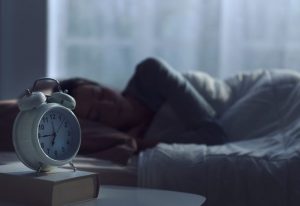 Practice good sleep hygiene. Go to bed and wake up at the same time every day, even on days off. Use a sleep mask or black-out curtains to make sure to sleep in the dark. Good sleep hygiene promotes a healthy circadian rhythm as does a regular daily meal schedule, getting enough physical exercise each day and getting bright morning natural light exposure every day.
Practice good sleep hygiene. Go to bed and wake up at the same time every day, even on days off. Use a sleep mask or black-out curtains to make sure to sleep in the dark. Good sleep hygiene promotes a healthy circadian rhythm as does a regular daily meal schedule, getting enough physical exercise each day and getting bright morning natural light exposure every day.
Reduce your exposure to bright light in the two to three hours before bedtime, including to such blue-light-emitting devices as mobile phones and tablets, to avoid interfering with the melatonin production you need for better sleep. For those seeking to improve long-standing bad sleep habits, a melatonin supplement can be helpful. Take the smallest effective dose 30 to 60 minutes before bedtime.
